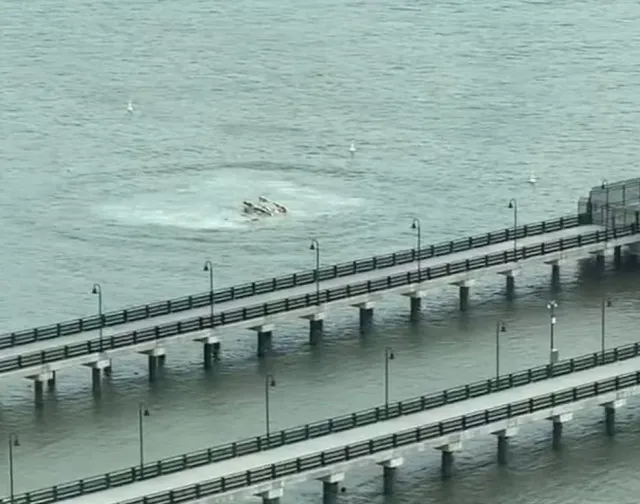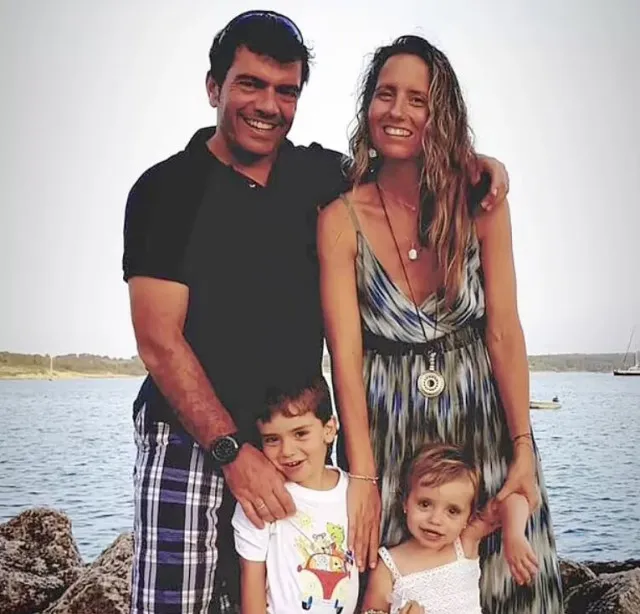New details emerge from the Hudson River helicopter tragedy that left a family of five and their pilot dead — including a chilling radio call moments before impact.
A sightseeing tour meant to showcase the beauty of New York City turned into a heartbreaking catastrophe when a helicopter crashed into the Hudson River, killing all six people on board.
The crash occurred around 3:15 p.m. on Thursday near Lower Manhattan, closer to the New Jersey side of the river.

Victims include Agustín Escobar, president of Siemens Spain, his wife, their three young children, and the unidentified New York Helicopter pilot.
Pilot Radioed in fuel emergency before the fatal descent
Moments before the NYC helicopter crash, the pilot issued a radio warning, alerting his base that the aircraft was running out of fuel.

“He called in that he was landing and that he needed fuel. It should have taken him about three minutes to arrive, but 20 minutes later, he didn’t arrive,” said Michael Roth, owner of New York Helicopter, to The Telegraph.
Roth described a flood of phone messages before another pilot flew over the Hudson and saw the wreckage.
“We’re all devastated. Every employee in our company is devastated. My wife has not stopped crying,” he said. “The death of a child, of any human being, is a monumental disaster.”
Prominent spanish executive and his family among the victims

According to officials and reports from The New York Times, the crash victims included Escobar, his wife Merce Camprubi Montal, and their children, aged 4, 5, and 11.
Photos taken before takeoff show the smiling family posing beside the helicopter on a helipad.
Escobar had a long-standing career at Siemens, recently serving as the CEO of Siemens Spain and previously heading Siemens Mobility Spain. He was also vice president of the German Chamber of Commerce in Spain.
Helicopter crashed just 17 minutes into flight after touring iconic sights
The Bell 206L-4 helicopter, registered as N216MH, took off from the Wall Street Heliport and was airborne for approximately 16 minutes.
The tour included a scenic loop near the Statue of Liberty before the chopper ascended along the Hudson River to the George Washington Bridge, flying at around 1,000 feet.
Emergency calls began pouring in at 3:17 p.m., just two minutes after the aircraft began its descent. By 5:15 p.m., rescue operations had transitioned into recovery mode, with all six victims pulled from the water.

Eyewitnesses describe sonic booms and mid-air breakup
Multiple witnesses reported seeing the helicopter “split in half” and hearing what sounded like a “sonic boom.”
“It was going so fast and just went straight into the water. I’ve never seen anything like that in my life,” one eyewitness told ABC News.
Another witness, walking along the West Side Highway, said:
“I saw the helicopter submerged in the water, and then there was a lot of commotion.”
Some onlookers thought the sound might have come from a building collapse or even an earthquake, reflecting the intensity of the blast.
Emergency crews battle weather and water to recover the wreckage
The NYPD, FDNY, and dive teams responded quickly, pulling mangled sections of the aircraft from the cold, murky waters. At the time of the crash, visibility was good, but clouds and wind gusts up to 25 mph created potentially challenging flying conditions, according to CNN.
The water temperature hovered around 50°F, adding urgency to rescue and recovery operations. Jersey City Mayor Steven Fulop confirmed that local authorities and the NTSB are working jointly to investigate the crash and locate additional parts of the wreckage.
FAA and NTSB will lead tnvestigation into what caused the Hudson river helicopter crash
The Federal Aviation Administration (FAA) and National Transportation Safety Board (NTSB) have launched an official investigation. So far, no conclusive cause has been determined, though reports of erratic flying and potential rotor blade separation remain under scrutiny.
Initial theories include mechanical failure, fuel shortage, or weather-related complications. Authorities are reviewing flight data, maintenance logs, and surveillance footage as part of the investigation.